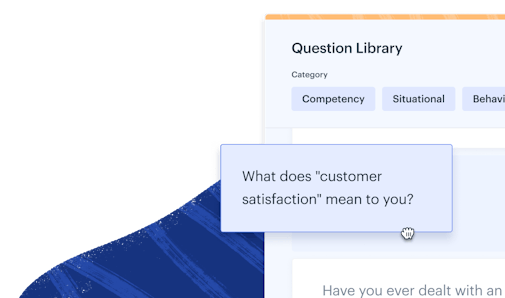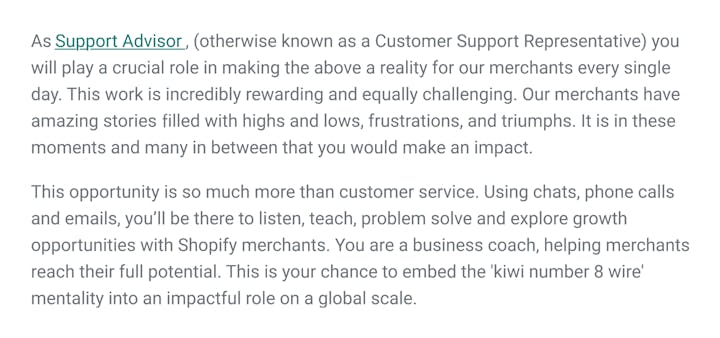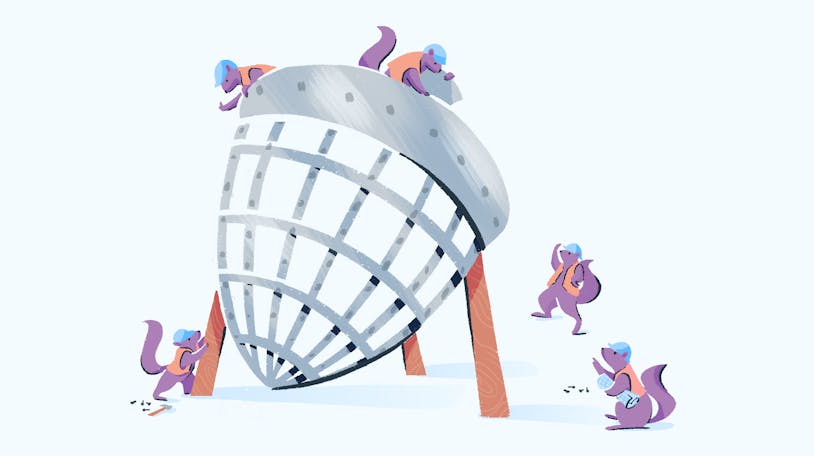Customer Support Job Description: Examples and Best Practices


Delivering consistently good online service requires carefully built systems, helpful tools, effective policies, and a skilled service team. Even a really great team can’t do it all on their own, but a disengaged, under-trained team can quickly ruin your customer experience.
Hiring the right people really matters. In this article, we’ll discuss how to write a customer support job description that attracts your ideal applicants, and we'll also review some excellent real-world examples.
Customer Service Interview Builder
Good interviews are at the heart of great hires. This tool makes it quick and easy to build a thoughtful interview process, from crafting job descriptions to asking the right questions.
Start building
Customer support job description best practices
There are two frequent challenges when advertising an open customer service role:
Confusion over what the job involves.
Everything from department store door greeter to technical engineering support can be described as “customer service.” Job boards can sometimes mix them all together, and that can result in mismatched applicants to work through.
Customer service perceived as a “foot in the door” role.
As in many “soft-skill” centered roles, applicants can sometimes treat customer service as a way into a company and are not genuinely interested in doing the work.
The first goal of an effective customer service job description is to attract the type of candidate you most want to talk to: People with the right skill set who genuinely want to deliver quality customer service.
Conversely, a good job description should not dissuade potentially excellent employees from applying. There is plenty of research showing that certain phrases and forms of language result in less diverse, less qualified applicant pools.
To avoid these pitfalls, follow these five best practices when writing a customer support job description.
1. Pick the right job title
Customer service isn’t a glamorous role; it’s not going to be on the “hottest new jobs of the 2020s” lists. So it can be tempting to use quirky titles like “customer elevation rockstars” or “happiness gurus” to make them seem more exciting.
Those titles may give applicants an idea of the importance you place on service, but they can also turn away qualified people who find them patronizing — or who just don’t recognize that it’s a support role.
Pick a job title that is clear, direct, and aligned with similar roles at companies like yours. You want a title that is recognizable to the people you want to apply because it matches how they describe their skills and experience.
Check out our list of customer service team and role names for some commonly used options.
2. Get people excited about the team and the company
Once your title has done its job and you have people reading your role description, you have a chance to stand out. This first section is where you can really sell the values of your company and service organization and show why customer service matters to your business.
To help write your description, consider why people might want to join your company:
Are you growing quickly? Or do you have a long track record?
Do you have examples to share that highlight your excellent culture?
Do you offer excellent wages or perks?
Do you work with enticing customers?
Is your industry exciting? Or particularly stable?
Has the service team delivered great results, won awards, or otherwise outperformed the average?
You may also include information about the team they would be joining and the people and roles they would interact with. If you have a company blog that shows off your values — or perhaps a culture video — share it here too. Just be careful not to imply that you must be just like the people already in the company in order to succeed.
3. Describe the role
Now you can get into the details of the job itself. Customer service roles can cover a wide range of tasks, so you will want to clearly list the types of work you expect this person to perform.
For example:
Does the role include phone, email, or chat support?
Will there be troubleshooting or problem solving?
Is it 100% customer-contact time, or is there out-of-queue time, too?
What tools and systems will they be using?
In some cases, you may not yet know exactly what the person will be doing, and you may want to list some potential tasks, too. You want to be honest, but you can leave room for flexibility for the right candidate.
If you can, including at least an indicative salary (or salary formula) will save time for everyone involved, particularly if you are paying well for traditionally under-valued roles like customer service.
4. Describe your ideal applicant
One of the most enjoyable parts of hiring is imagining your perfect applicant — that person who fills every skill gap, is interested in doing the things you are not, and can start instantly.
Sadly, that person probably does not exist. It is easy to go overboard with listing requirements, resulting in a listing that disqualifies every living human. Instead, spend some time thinking honestly about all your potential requirements.
Break down your list into three groups:
Essential requirements: These are items that an applicant could not do the job without. That may include things like technical skills, location, licensing, legal right to work, or specific product knowledge, for example. If you list it here, it should mean you would not consider any candidate who did not meet all of the requirements.
Preferred skills: In this section, you can include anything that isn’t 100% required but that you expect your top candidates to have. That might include items like a demonstrable level of experience, a history of remote work, team leadership, or secondary technical skills.
Nice-to-haves: In this section, include the skills, experiences, and attributes that you would be excited to see in a candidate but that aren’t necessary to doing the job well. The items you list here might convince someone who doesn’t feel qualified that they could still be a good fit, so they are worth spending time on.
Note: Many people, particularly women, are less likely to apply for roles where they don’t meet every stated requirement. Being careful about how you label your requirements — as opposed to your “nice-to-haves” — will broaden your pool of quality applicants.
5. Show people how to apply
Finish your job description off with clear instructions on how to apply. For example, if you love to read good cover letters, you can make that part of the application process.
Avoid losing good candidates by having a clear process and listing any relevant application dates. At Help Scout, we have documented our remote hiring process publicly and give our applicants an outline of the whole process upfront.
7 examples of great customer support job descriptions
Here are a few recent examples of customer service roles that are worth reading through. Be aware that these may no longer be current roles or descriptions.
1. Help Scout — Customer Champion
In our own job description from 2019, we go into detail on career growth and include a salary range to attract quality people who may not have considered customer service as a long-term career option.

2. Gitlab — Support Engineer
We love the use of a video to set the tone and introduce the team. It adds personality and replicates some of the experience applicants would look for if they knew someone at the company already. Linking out to real work done by others in similar roles is a great way to showcase the job to be done.

3. Zapier — Customer Champion Team Lead (Onboarding)
Zapier does a great job of explaining their particular approach to work and their communication culture. We also love their embedded application questions.

4. Cliniko — Customer Support
Cliniko is clear upfront that they aren’t looking purely at years of experience or credentials. We also like their list of “things you won’t do” as a way of differentiating from the common expectations around customer service roles.

5. Automattic — Happiness Engineer
The link to team members telling their stories is a strong opener, and the tip to increase your chances, right at the end, is likely to be a great filter for people who pay attention.

6. Skechers — Director of Customer Care
The framing of requirements as “Essential Job Results” is smart as a guide to help applicants demonstrate how they will succeed.

7. Shopify — Support Advisor
Note their explicit mention of Customer Support Representative, since that is a more common name for the role. Shopify’s mention of number 8 wire is a nice way to show understanding of the local market.

Finding the right team starts with your job description
The time you invest in planning and writing your customer service job description will pay off many times over.
A well-written job description does a lot of filtering for you, saving you time and the time of your applicants. It will also form a template you can use to define your interview and hiring process, acting as a guide for your business needs.
You can find more help with hiring the perfect customer service team in our guide: "How to Hire for Customer Service: A Step-by-Step Guide".
More job description templates and examples:
The Supportive Weekly: A newsletter for people who want to deliver exceptional customer service.
